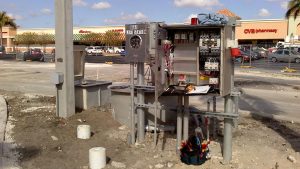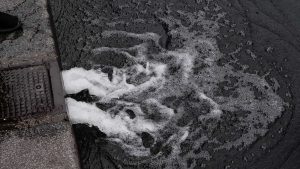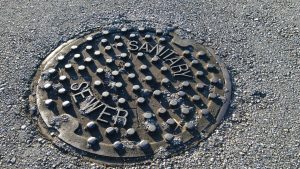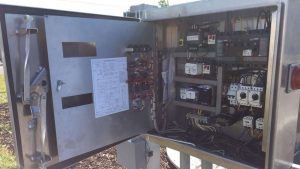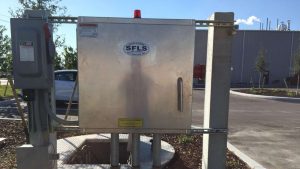Untreated F.O.G. in lift stations causes clogs, inefficiencies, odors, and potential failures. Build-up disrupts operations, reduces efficiency, and leads to costly repairs and overflows. Neglect fosters bacteria growth, risking system functionality and public safety. Control measures such as maintenance schedules, grease traps, and education can prevent these issues. Take action to avoid the risks and maintain a smoothly operating lift station. Further details on the impacts and solutions are available in the research provided.
The Importance of F.O.G. Management
Managing fats, oils, and grease (F.O.G.) is crucial for the efficient operation of lift stations. When F.O.G. enters the system, it can solidify, causing blockages and clogging pipes. Regularly removing F.O.G. buildup helps prevent costly repairs and downtime. By implementing proper F.O.G. management practices, you ensure the smooth flow of wastewater through the lift station, reducing the risk of backups and overflows.
To effectively manage F.O.G., consider installing grease traps or interceptors to capture F.O.G. before it enters the system. Routine maintenance, such as cleaning and pumping out these traps, is essential to prevent F.O.G. from accumulating and causing issues downstream. Educating staff and stakeholders on the proper disposal of fats, oils, and grease can also contribute to a well-functioning system.
Effects of F.O.G. Build-up
The accumulation of F.O.G. in lift stations can lead to severe operational disruptions and costly maintenance issues. When F.O.G. builds up within the system, it can create blockages in pipes and pumps, reducing the efficiency of the lift station. As fats, oils, and grease solidify, they form clogs that hinder the flow of wastewater, increasing the risk of overflows and backups. These blockages not only impede the normal functioning of the lift station but also put additional strain on the equipment, potentially leading to premature wear and breakdowns.
Moreover, the presence of F.O.G. promotes the growth of bacteria and foul odors, creating an unpleasant and unhealthy environment around the lift station. The corrosive nature of F.O.G. can also damage the infrastructure of the station, necessitating costly repairs or replacements. To prevent these detrimental effects, regular F.O.G. removal and proper maintenance practices are essential to ensure the smooth operation and longevity of lift stations.
Risks of Neglecting F.O.G. Removal
Neglecting proper F.O.G. removal procedures can result in significant operational risks for lift stations. When fats, oils, and grease accumulate within the system, they can lead to clogged pipes, pump failures, and foul odors.
The build-up of F.O.G. creates a breeding ground for bacteria, which can deteriorate equipment and reduce the station’s efficiency. Additionally, the excess F.O.G. can solidify and form blockages, causing backups and overflows that may result in costly repairs and environmental contamination.
Ignoring the importance of regular F.O.G. removal not only jeopardizes the functionality of the lift station but also poses a threat to public health and safety. It’s crucial to implement effective F.O.G. control measures to prevent these risks and ensure the smooth operation of lift stations.
Solutions for F.O.G. Control
To effectively combat the risks associated with F.O.G. accumulation in lift stations, proactive measures must be implemented to control and prevent further issues. Here are three solutions for F.O.G. control:
1. Regular Maintenance:
Implement a routine maintenance schedule to inspect and clean lift station equipment regularly. This includes pump maintenance, grease trap cleaning, and the proper disposal of F.O.G. waste.
2. Use of Grease Interceptors:
Install grease interceptors or traps in kitchen drains to prevent F.O.G. from entering the sewer system. Regularly empty and clean these interceptors to ensure they function effectively.
3. Educational Programs:
Conduct educational programs for staff and the community on the proper disposal of F.O.G. materials. Promote awareness about the impact of F.O.G. on lift stations and the environment, encouraging responsible practices.
Preventative Measures for F.O.G. Issues
Take proactive steps to prevent F.O.G. issues in lift stations by implementing preventative measures early on. Regularly schedule maintenance checks for pumps and motors to ensure they’re functioning correctly.
Educate staff on proper F.O.G. disposal practices to prevent blockages and build-up in the system. Install grease traps or interceptors to capture F.O.G. before it enters the lift station, reducing the risk of clogs and backups.
Consider implementing a F.O.G. management program that includes training, monitoring, and enforcement to keep F.O.G. levels in check. Utilize high-pressure water jetting equipment to clean pipes and remove any accumulated F.O.G. deposits.
Collaborate with local authorities to establish guidelines for F.O.G. discharge limits and ensure compliance with regulations. By taking these preventative measures, you can significantly reduce the impact of F.O.G. on lift station operations and prolong the lifespan of your equipment.
Implement Regular F.O.G. Management and Treatment Practices With South Florida Lift Stations
South Florida Lift Stations specializes in providing comprehensive solutions to address F.O.G. buildup and ensure the smooth operation of your lift stations. Our experienced team uses advanced techniques and equipment to effectively manage and mitigate F.O.G. impacts, safeguarding your infrastructure and protecting the environment.
Contact South Florida Lift Stations today at 239-332-0041 to schedule a consultation and learn how our expert services can help maintain the efficiency and longevity of your lift stations.


